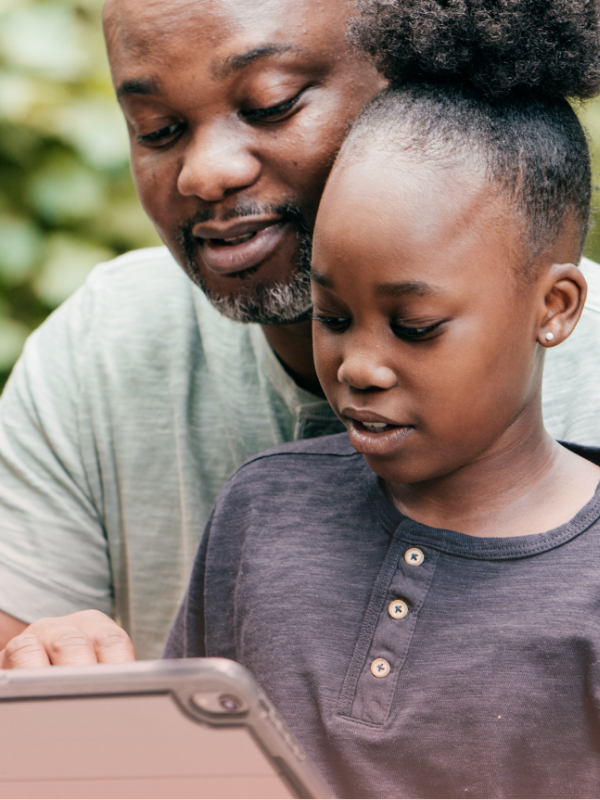Worried about online risks? Learn how to teach digital safety to kids with calm, confidence, and everyday tools that truly protect.
Teaching digital safety to kids doesn’t require tech expertise—it just takes trust, clear language, and a few repeatable habits. Whether your child is exploring educational apps or texting friends, they need your steady presence to help them navigate digital spaces with confidence and care.
Why Digital Safety Starts at Home
Kids today are online early – and often. According to a 2022 report from Common Sense Media, 53% of kids under age 11 own a smartphone, and most start using digital devices by age 3 (Rideout, 2022).
The way parents talk about technology—calmly, openly, and without fear—can strongly influence how children use digital tools and make decisions online. Studies show that parent-child conversations grounded in trust help shape thoughtful, responsible digital behavior (Livingstone & Blum-Ross, 2020).
When you start with openness and curiosity instead of fear, your child learns that technology isn’t “bad” – but that it comes with responsibilities and boundaries.

Simple Ways to Teach Digital Safety Every Day
1. Use Their Language
Instead of abstract rules, explain digital safety in real-life terms: “If someone you don’t know messages you, it’s just like a stranger walking up at the park. You don’t talk or share anything.”
2. Create a Tech Talk Ritual
Once a week—at bedtime, over snacks, or during a walk—ask: “Anything come up online today that was confusing or weird?” Normalize these check-ins.
3. Teach Them the 3 Cs
Every post, message, or app choice should pass these:
- Clear: Is it safe to share?
- Considerate: Does it respect others and their feelings?
- Confident: Would I show this to a grown-up?
4. Keep the Door Open
Let your child know they can tell you anything – even if they made a mistake online. Reassure them that safety is a learning process, not a punishment.
5. Model the Boundaries You Teach
Your child learns digital habits from watching you. Keep devices away during meals, talk about your own screen use, and show how you pause before posting.
Start Early, Keep It Ongoing
Digital safety isn’t a one-time lesson; it’s a series of everyday moments. Just like you taught them to look both ways before crossing the street, you can guide them through the online world with clarity and calm.
For more boundary-setting tips, check out Screen Time Rules by Age: What Parents Should Know.
Frequently Asked Questions
How can I explain digital safety to a young child without scaring them?
Use comparisons they understand: “Just like we don’t open the door for strangers, we don’t click on messages from people we don’t know.” Keep it calm and concrete.
What are the first steps for teaching digital safety to kids who already use devices daily?
Start by observing how they interact with apps, games, or messages. Then gently ask open-ended questions: “What would you do if someone asked you for your name online?” Build safety into what they already know.
Final Thoughts
You don’t need to be tech-savvy to guide your child through digital spaces—you just need to show up with trust and consistency. Teaching digital safety to kids is about staying in conversation, staying curious, and staying connected. At Parent Pathways Academy, we’re here to help you raise confident digital citizens – one click, one question, one moment at a time.
Download the PPA app to explore the Digital Wellness Pathway and find tools that help your family build safe, healthy tech habits together.
References
Livingstone, S., & Blum-Ross, A. (2020). Parenting for a digital future: How hopes and fears about technology shape children’s lives. Oxford University Press. https://academic.oup.com/book/32086
Rideout, V. (2022). The Common Sense Census: Media use by kids age zero to eight, 2022. Common Sense Media. https://www.commonsensemedia.org/sites/default/files/research/report/8-18-census-integrated-report-final-web_0.pdf

